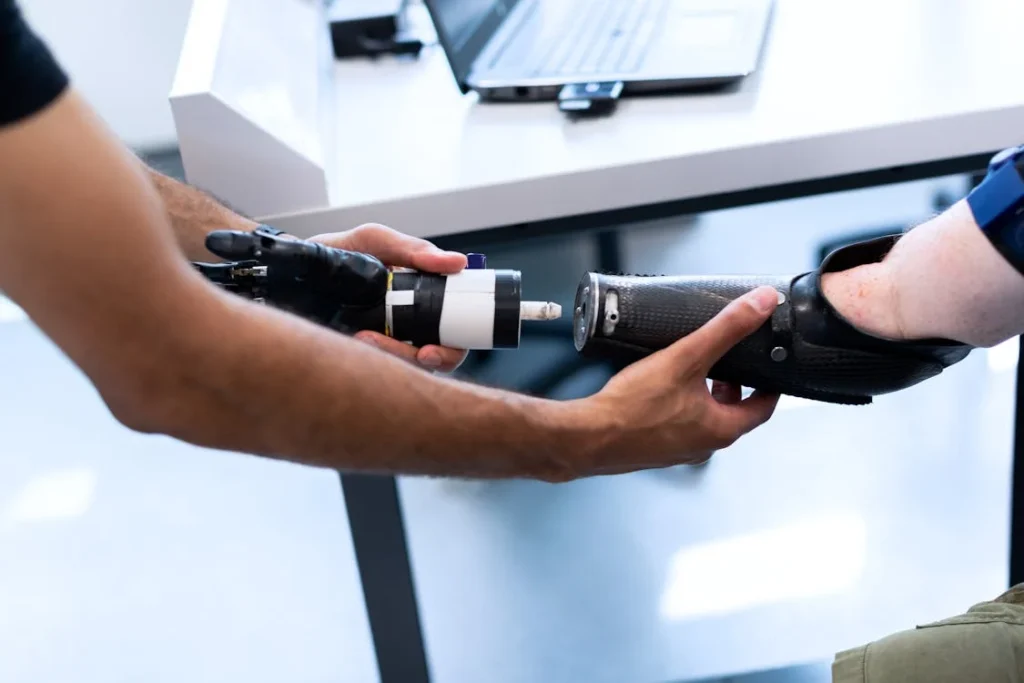Getting a prosthetic hand is a big step. But getting it to work just right for your daily life? That takes something extra. That’s where grip calibration comes in. It’s the quiet hero behind every smooth motion, every firm hold, and every gentle release.
Think of it like tuning a musical instrument. You already have the tool. Now, you need to make it match your rhythm. Whether you’re using a bionic hand for the first time or looking to fine-tune your current settings, learning how to calibrate your grip properly makes all the difference. It helps you move more naturally, get things done faster, and feel more confident in everything you do.
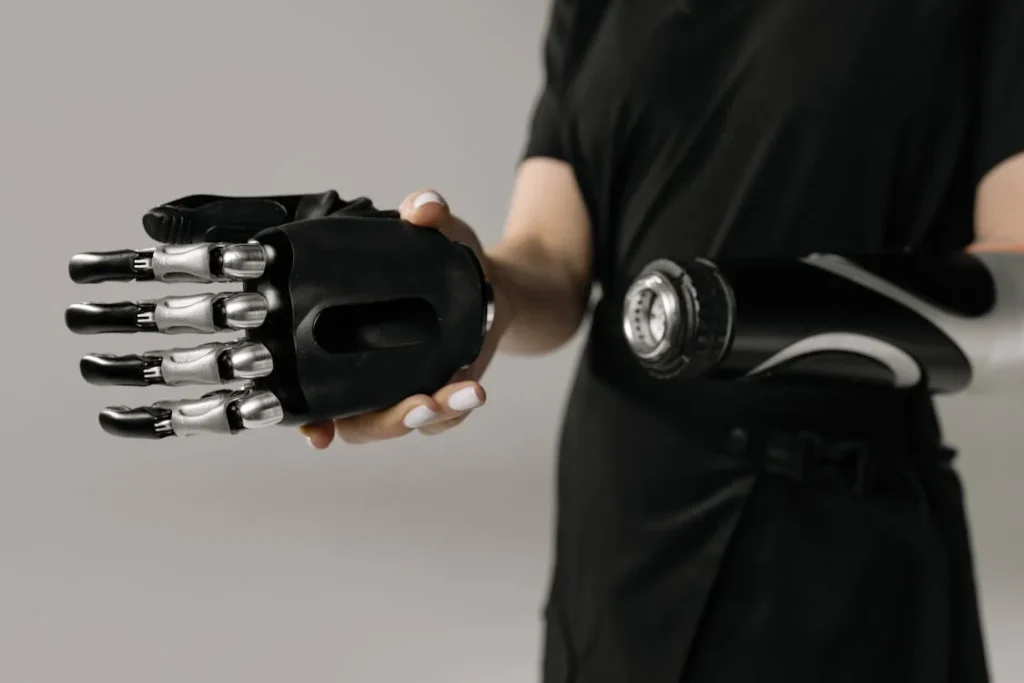
Why Grip Calibration Matters More Than You Think
It’s Not Just About Holding Things—It’s About Holding Them Right
Every prosthetic hand can grip. But the real question is—how well? Does it grip tight enough to hold a bag of groceries? Can it grip soft enough to hold a paper cup without crushing it? This is where grip calibration steps in. It’s not about whether the hand works. It’s about how well it works for you.
When your prosthetic hand is not calibrated correctly, everyday tasks can feel harder than they should. You might drop things more often. Or you might find it tiring to open and close the hand again and again. Small mistakes can turn into big frustrations. That’s why tuning your grip matters so much. It helps you do things smoothly, without thinking too much or working too hard.
It’s not just about strength. It’s about balance. A well-calibrated hand knows when to be gentle and when to be strong. That balance makes all the difference in how you feel while using it.
Getting to Know Your Muscle Signals
Your bionic hand listens to your muscles. When you flex or contract certain muscles in your arm, sensors in your prosthetic pick up those signals and tell the hand what to do. These are called myoelectric signals. They’re like your body’s secret language—and learning to “speak” clearly in that language helps your hand understand you better.
If your signals are too weak or too strong, your hand might not respond the way you want. Maybe it closes too fast or doesn’t close at all. Maybe it feels delayed or unsure. That’s usually not a problem with the hand—it’s often about the signal strength and how the hand is tuned to respond.
Calibrating your grip means adjusting how sensitive your hand is to those signals. Think of it like adjusting the volume on your phone. Too low, and you can’t hear. Too high, and it becomes noise. Finding that sweet spot is key.
During your fitting or training, a prosthetist can help you find this balance. But over time, as your muscles get stronger or your routines change, you might need to adjust it again. Learning how your body talks to your hand is a big step toward using it naturally.
What Happens When Calibration Is Off
When the calibration is off, you feel it. Sometimes, it’s physical—your hand feels too slow or too jerky. Other times, it’s emotional. You might lose trust in your hand. You might start avoiding tasks that you used to enjoy. Even something simple like tying shoelaces or eating with a spoon can feel overwhelming if the grip doesn’t match your needs.
That’s why it’s so important to tune your prosthetic to fit your day—not the other way around. Everyone’s routine is different. Some people need precision for art or writing. Others need strength for lifting or carrying. Your grip settings should reflect the life you want to live.
And here’s the best part—you can make those changes. You don’t have to settle for “almost good enough.” Your prosthetic hand is a smart, responsive tool. It’s built to adapt. And you have the power to guide that change.
The Power of Practice and Muscle Memory
Calibration isn’t a one-time fix. It’s something you improve over time. As you use your hand more often, your muscles learn what signals work best. Your brain gets faster at sending the right commands. And your hand becomes better at responding.
That’s why we always tell new users—practice is everything. Not just random practice, but mindful practice. Do the tasks you care about most. Try different types of grips. See how your hand behaves. And take note of what feels right—and what doesn’t.
You’ll start to feel when something is off. You’ll notice when your grip is too hard or too soft. And with a little help from your prosthetist, you’ll be able to make fine adjustments that bring things back to balance.
This kind of hands-on learning builds what we call muscle memory. That’s when your body starts doing things automatically. You won’t have to think about opening or closing your hand. You’ll just do it—like you always did. And that’s when a prosthetic stops feeling like a device and starts feeling like a part of you.

How to Fine-Tune Your Grip for Real-Life Tasks
Start With the Movements You Use Most
Every person has a different routine. Some spend their days working at a desk. Others are caring for children, cooking, gardening, or using tools. When it comes to grip calibration, the best place to start is by focusing on what you do most often. These are the actions that matter most in your daily life, so they should be the first ones you fine-tune.
If typing is a big part of your day, you need a gentle, quick grip that lets you tap keys without pressing too hard. If you cook a lot, you’ll need a firm, steady grip for holding utensils or turning taps. The goal is to make your prosthetic match your rhythm—so your day flows better, not slower.
Try doing your most common tasks with your prosthetic and pay attention to how it feels. Are you squeezing too tight? Is the grip delayed? Does it feel too weak to be useful? These are signals that your calibration might need adjusting.
Work With a Professional, But Learn to Listen to Your Hand
During your initial fitting, a prosthetist will help you set up your grip settings based on your muscle strength, control, and comfort. They use special tools to measure how your muscles communicate with the sensors in your prosthetic. They also watch how you move, adjust, and respond.
But here’s the thing—your body changes. Muscles grow stronger with time. Habits shift. Routines evolve. That’s why it’s important to learn how to check in with your hand regularly. Don’t rely only on follow-up visits. Build the habit of listening to your hand.
If you feel a grip is too slow, too forceful, or too loose, take note. It could be a sign your signal sensitivity needs tweaking. Most modern bionic hands, including Grippy™, come with the ability to fine-tune grip force and speed either through the device interface or with support from your prosthetist.
Learning this language—how your hand feels and reacts—gives you real control. It turns your prosthetic from a helpful tool into a true extension of you.
Use Repetition to Build Smooth Motion
The more you repeat a movement, the better your brain and muscles get at doing it smoothly. That’s why grip calibration isn’t just about changing settings—it’s about building habits. Start with simple, useful actions like picking up a cup, turning a doorknob, or holding a phone. Do these actions again and again until they feel easy.
Each repetition helps your brain fine-tune the signal it sends. Each attempt helps your hand respond better. And over time, you’ll find that the motion becomes automatic. That’s when you know your grip is truly calibrated—not just in the hand, but in your brain and body too.
It’s like riding a bicycle. At first, it’s awkward. But soon, your body just knows what to do.
Practice in Different Environments
Grip calibration isn’t only about what you do—it’s also about where you do it. The way your hand behaves might feel different in a quiet home versus a busy street, or at your desk compared to the kitchen. That’s because each setting brings new challenges, distractions, and pressures.
So it’s important to train in different places. Try using your hand in real-world environments—not just in front of a mirror or at a clinic. Practice in the kitchen, at your workplace, or even while commuting. Notice how your hand responds in each space. Is the grip too fast? Too soft? Too sensitive when you’re in a rush?
This kind of practice helps your calibration become practical. It ensures your hand is ready for your life—not just a test room. And it helps you feel more confident no matter where you go.

Common Grip Calibration Challenges and How to Overcome Them
When the Hand Feels Too Sensitive
Sometimes, you might feel like your prosthetic hand is overreacting. A tiny muscle movement causes a full grip, or your hand closes when you didn’t mean it to. This usually means the sensitivity is set too high. It’s like turning the volume up so loud you hear every little sound—even ones you didn’t mean to notice.
This kind of calibration issue can make you feel out of control. You might start avoiding tasks like holding a glass of water or shaking someone’s hand. But the good news is, it’s fixable.
If you’re using Grippy™, this adjustment can be made easily by a trained prosthetist, or through our user-friendly interface in select models. Lowering the sensitivity just a bit can help your hand respond only when you really mean it to. Over time, as you gain better muscle control, you can slowly increase sensitivity again for faster actions.
When the Grip Is Too Weak or Slips Often
On the other hand, if your prosthetic feels too soft or keeps dropping things, the grip strength might be too low. This often happens when someone is still building muscle confidence, or when they’re too cautious about using their hand fully.
The goal here is to increase strength slightly while making sure the movement still feels natural. One great way to do this is by practicing with objects that offer some resistance—like rubber balls or light household items. This lets your muscles learn the right level of effort needed for different tasks.
And remember, your hand is designed to be strong when you need it to be. If it’s not holding firmly, it’s just asking for a little tuning. There’s no need to struggle through weak grips or frustrating slips. You deserve a prosthetic that gives you a secure hold every time.
Handling Grip Delay or Lag
Another common issue some users experience is grip delay. You move your muscle, but your hand takes a second to respond. Or worse—it only responds sometimes. This delay can make everyday tasks feel slow or awkward.
Grip delay is often caused by unclear or inconsistent muscle signals. It might mean the sensor placement needs to be adjusted. Or that your muscles need strengthening. In some cases, the software calibration might need a refresh.
Working with your prosthetist to reposition sensors or reprogram response times can make a big difference. But also, simple daily exercises—like opening and closing your hand while watching it in the mirror—can help build a stronger, cleaner muscle signal over time.
We’ve seen many users completely eliminate delay within a few weeks of focused practice and small calibration tweaks. The key is not to give up. The more clearly you “talk” to your hand through muscle signals, the faster and more precise it becomes.
Confidence Is the Missing Piece
Sometimes, the issue isn’t technical at all—it’s emotional. After losing a limb, it can be hard to trust your body again. That hesitation can show up in your movements. You may hold back a little, not push fully, or second-guess yourself.
This emotional hesitation can affect how your grip behaves. The hand reads every signal you send, even the unsure ones. That’s why part of calibration is about confidence. Believing your hand will respond. Trusting your ability to use it well.
Confidence grows with small wins. Celebrate every time your grip holds steady. Every time you lift, turn, hold, or carry something on your own. These moments are not just about movement—they’re about momentum. And they help your hand become more of a teammate than a tool.
If you ever feel stuck, remember—this is a journey. Everyone’s path looks different. But with each step, your control grows. And with the right tuning, your grip becomes something you don’t even think about anymore—it just works.
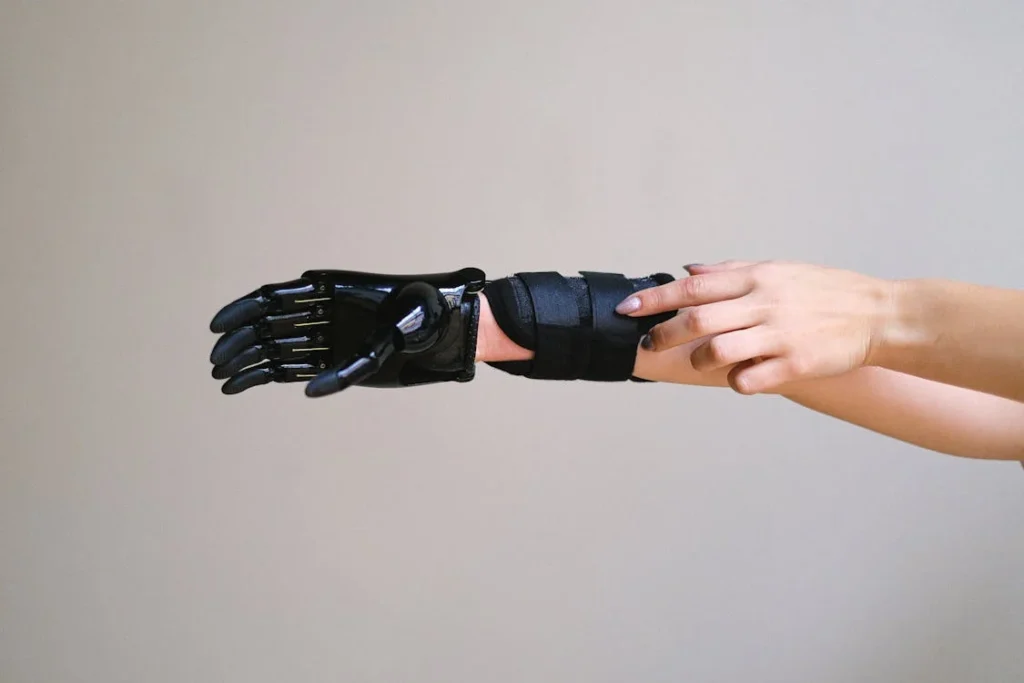
Training Your Brain and Muscles to Work as One
Why Calibration Starts in the Mind
Your brain is the control center for everything your body does—including how your prosthetic hand moves. When you think about grabbing a bottle, your brain sends signals down to the muscles in your forearm. These muscles don’t just move—they also create electrical signals, which your bionic hand reads and responds to.
But here’s the key: your brain has to get used to talking to your hand in this new way. It has to learn how strong or soft to send the signal. It has to learn how long to hold that signal before letting go. This process doesn’t happen overnight. It takes patience, practice, and time.
The more you use your hand, the faster your brain builds new pathways to control it. At first, you might overthink every move. But soon, it becomes automatic—just like it used to be. That’s when your prosthetic truly becomes a part of you.
Simple Mental Techniques to Improve Calibration
One of the best ways to improve your grip control is to visualize the action before doing it. Think clearly about what you want your hand to do. Imagine the feeling of grabbing a pen, turning a key, or holding a glass. This kind of mental practice helps your brain focus and send clearer signals.
Another trick is to count silently while holding a grip. For example, grip a soft object and count “one, two, three” before releasing. This helps your brain and muscles get used to timing, pressure, and control. You’ll start to feel more confident about how long and how strong your grip should be.
Mirror therapy is also powerful. Look into a mirror and watch your prosthetic hand move while imagining it’s your real hand. This simple act trains your brain to connect better with your hand. It builds trust and improves coordination, even if it feels strange at first.
The more connected your mind and body are, the more accurate your grip becomes.
Building Endurance Without Overdoing It
As you use your prosthetic more often, your muscles will get stronger. But just like with any physical activity, pushing too hard too fast can cause strain. It’s important to build grip endurance slowly.
Start with short practice sessions every day—maybe 10 to 15 minutes at a time. Focus on clean, controlled grips. Take breaks when needed. As your muscle strength grows, you can gradually increase the time and intensity.
Some people worry that their muscles aren’t strong enough to control the prosthetic well. But strength isn’t the only factor—clarity and consistency of the signal matter more. Even small, clear movements can create big results when the hand is well-calibrated.
If you ever feel sore, tired, or frustrated, take a step back. Rest is part of the process too. Your body is learning something new. And like anything new, it takes time.
Staying Positive Through the Ups and Downs
There will be good days and hard days. Some days your hand will feel perfectly in sync. Other days it might feel off. That’s normal. Calibration is a journey. It’s not about being perfect—it’s about making steady progress.
One way to stay motivated is to track your milestones. Keep a journal or take photos of tasks you’re learning to do. You’ll be amazed at how far you’ve come in just a few weeks or months. Those small wins are proof that your grip is getting stronger, smarter, and more reliable.
And don’t be afraid to ask for help. At RoboBionics, we’re here for you every step of the way. Whether it’s a quick question about grip settings or a full recalibration session, we’re just a call or visit away.
You don’t have to figure it all out alone. Your journey is personal, but you’re not in it by yourself.
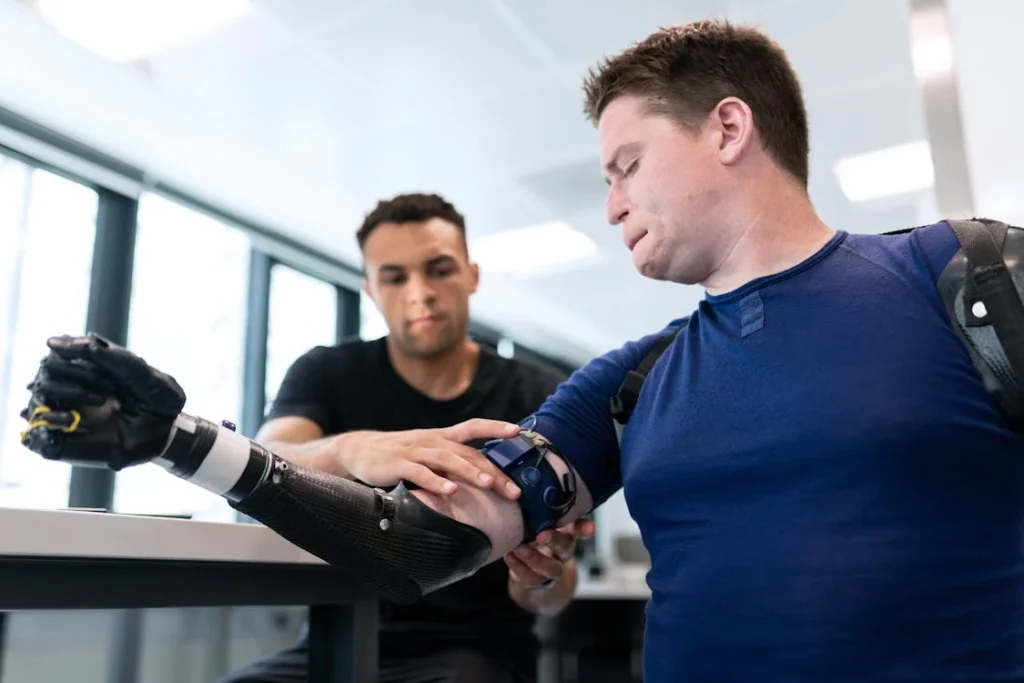
How Environment and Lifestyle Impact Grip Calibration
Why Calibration Is Not One-Size-Fits-All
No two users are the same—and neither are their surroundings. Where you live, what you do each day, the climate, the pace of your routine—all these things affect how your prosthetic should behave. That’s why a hand calibrated for someone in a quiet office setting might feel completely wrong for someone working outdoors or in a bustling market. It’s not about better or worse. It’s about fit.
Your environment directly shapes how your hand needs to respond. If you’re in a warm, humid place, sweat can affect sensor connection. If you’re always on the move, you’ll need quicker responses. If your job includes holding tools or working with water, grip strength and feedback need to be spot on. This is why we always say: calibrate not just for the task, but for the setting.
City Life vs. Rural Living: Different Needs, Different Grips
Living in a city often means faster movements, tight spaces, and constant motion. Think about grabbing onto a moving bus, holding your phone on a crowded train, or paying at a kiosk with one hand. These situations call for a prosthetic that can switch grips fast, with sharp precision and little hesitation.
Now think about someone in a village or rural area. Their day might involve farming tools, cooking on a traditional stove, or lifting buckets. The tasks are more repetitive, and often need stronger, more durable grips that can hold firm over longer periods. The calibration here needs to focus on endurance, safety, and comfort—especially if water or dust is involved.
In both cases, the core technology remains the same. But the way it’s tuned? Completely different.
How Climate Plays a Quiet Role in Calibration
Heat, humidity, cold air—these aren’t just weather problems. They affect your skin, your muscles, and your sensors. In hot or sticky weather, sweat can reduce sensor accuracy. This might lead to weaker signals or false triggers. In colder areas, your muscles might be stiffer, making it harder to send strong commands to your prosthetic.
To solve this, we recommend frequent recalibration based on season changes. If your hand starts acting differently as the weather shifts, don’t ignore it. Your body is telling you something. Take the time to check your signals and make adjustments with your prosthetist if needed.
At RoboBionics, we’re developing smarter materials and covers that resist sweat and improve comfort. But even with these tools, real-world calibration still matters. Pay attention to how your hand behaves in different climates—and adjust accordingly.
Adapting Your Hand for Cultural Movements and Traditions
India is rich in cultural practices—folding hands for a greeting, holding a diya during a prayer, eating with hands, tying sarees or turbans, even playing musical instruments. These aren’t just gestures. They’re deeply emotional actions that connect people to their roots.
But many imported prosthetics aren’t built for this kind of motion. They’re designed for western habits—shaking hands, holding cups, typing on laptops. That’s why calibration in an Indian context is so important. Your prosthetic should reflect the life you live—not just what someone in another country imagined.
At RoboBionics, we take pride in helping users customize their grip patterns for traditional Indian movements. During your calibration session, we don’t just ask about work or chores. We ask about festivals, family roles, daily routines, and how you express yourself.
This kind of lifestyle calibration makes a huge difference. It turns your prosthetic from something you wear into something you live with.
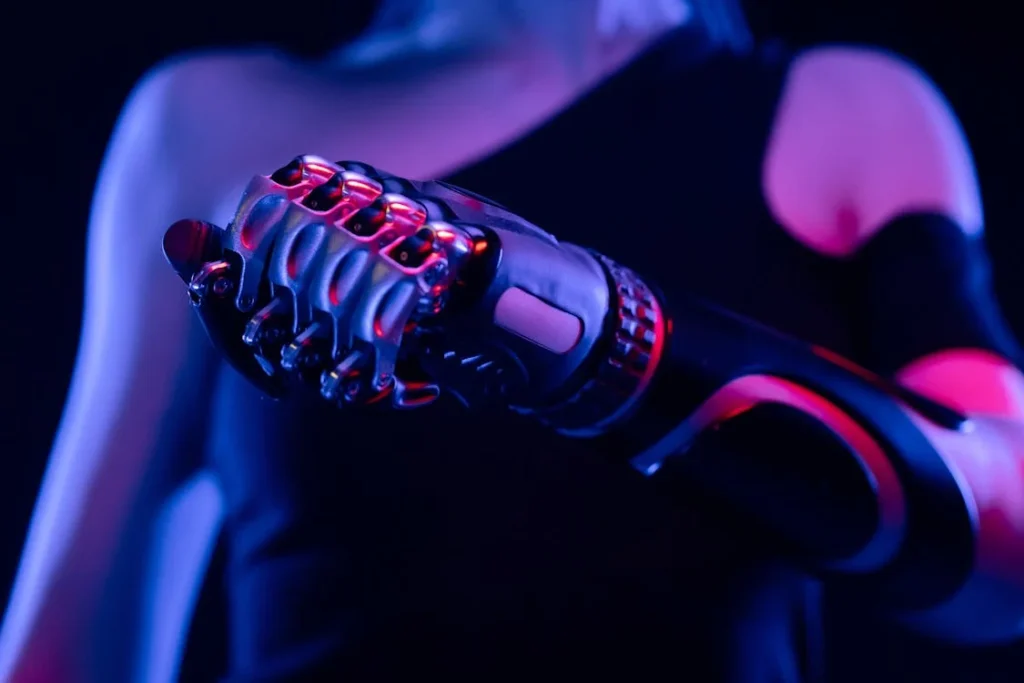
How Emotional State and Stress Levels Influence Grip Performance
The Link Between Emotions and Muscle Signals
Many people don’t realize this, but your emotional state can directly affect how your prosthetic hand behaves. When you’re calm and focused, your muscle signals tend to be smooth and steady. But when you’re anxious, rushed, or stressed, those same signals can become shaky, uneven, or too intense. Your bionic hand doesn’t know you’re stressed—it just responds to the muscle activity it picks up.
This connection is powerful. If you’re under pressure, your hand might close too quickly, hold too tight, or respond slower than expected. You might think your prosthetic is malfunctioning, but often, it’s just reflecting your mood through your muscle signals.
That’s why understanding the emotional side of calibration is so important. The more you’re aware of how your feelings affect your grip, the better you can manage your responses—and tune your hand more effectively.
Learning to Stay Calm Improves Grip Accuracy
One of the best “calibration tools” is actually your breath. When you breathe deeply and slow down, your entire body relaxes. Your muscles soften. Your signals become cleaner. This allows your prosthetic hand to respond more smoothly and consistently.
Practicing mindful breathing or simple meditation for just five minutes a day can make a real difference. Especially before tasks that require precision—like using scissors, handling hot cups, or even greeting someone with a handshake—it helps to pause, center yourself, and reset your mind.
At RoboBionics, we often encourage users to pair physical training with emotional awareness. It’s not just about grip force. It’s about emotional grip—feeling steady inside, so you can move with clarity outside.
How Confidence Affects Signal Strength
Confidence isn’t just a feeling. It has a physical effect on your body. When you believe in your control, your signals get clearer. Your muscles respond faster. Your grip becomes more fluid. That’s why users who practice regularly tend to see better results over time—not just because their muscles grow, but because their self-trust grows too.
We’ve seen this countless times. A user may start off shy and unsure, barely moving the prosthetic. But with each successful grip, their posture changes. Their eyes light up. They start reaching for more, doing more, becoming more.
This is why celebrating small wins matters. Every grip that works, every task you complete, every time you avoid dropping something—it all adds up. Each moment builds emotional momentum. And that momentum makes your hand more responsive—not through settings, but through belief.
When Stress Causes Calibration Confusion
It’s also important to recognize when stress is tricking you. Sometimes users rush back to the clinic saying, “My hand isn’t working right!” But when we sit with them, breathe, and guide them through a task, the hand works just fine.
What’s happening here isn’t a hardware issue. It’s a headspace issue. Stress makes your signals messy. And messy signals confuse the hand.
That’s why we recommend a brief “reset” technique. If your hand starts behaving strangely during a busy or emotional moment, pause. Take three slow breaths. Roll your shoulder to loosen your muscles. Then try the movement again. You’ll often see an instant improvement.
It’s not magic—it’s biology. Your muscles are directly tied to your mood. Your prosthetic simply responds to both.
This connection between the mind and the hand is what makes bionics so beautifully human. And learning to manage both gives you full control.
Conclusion
Your prosthetic hand is powerful, but the real power comes from you. Calibration isn’t just a technical task—it’s a journey of learning, adjusting, and growing. It’s about understanding your muscles, tuning into your emotions, and shaping your hand to fit your real life—not someone else’s idea of it.
Every time you tweak your settings, practice a task, or listen to your body—you’re building trust. Trust in your hand. Trust in yourself. And with every step, you move closer to effortless motion, better control, and deeper confidence.
At RoboBionics, we’re not just here to give you a bionic hand. We’re here to help you make it yours. So tune in, test things out, stay patient, and remember—perfect grip isn’t the goal. Personal grip is.
And when you’re ready, we’re always here to help you recalibrate, refine, and reach for more.
Book your free demo today and see how Grippy™ can be tuned to fit your life—beautifully and powerfully.
Book a demo now »



